By Alex Trukan
Defensive midfielder’s position has been a response to available half spaces between units. Many team used to play with flat lines (eg. 4-4-2) what created gaps easy to exploit by the opposition. Defensive midfielder’s role was to cover these spaces, screen through balls and mark any opposition players within these areas. There were mainly two variations with this position – choosing to play with one or two defensive midfielders. Having one player in this position provides useful defensive cover, however, at the same time, it is often not enough to prevent opposition playing through. With quick ball circulation and clever movements off the ball, there are often gaps that arise around defensive midfielder. These can be exploited not only by central midfielders but also wingers or strikers rotating positions and dropping deeper into free spaces.
As the ball is played across the back line, there will be often available spaces between the opposition midfield and defenders’ units. Defensive midfielder will be looking to cover these, however, if the units move too far apart from each other, it will be very difficult for defensive mid to not get overloaded. As the defensive midfielder will try to move as the ball moves, quick switches of play and playing sideways before playing forwards might catch him off balance.
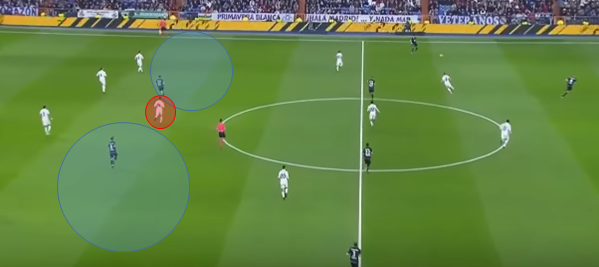
Central midfielder would be looking to open up his body position to receive on a back foot and face forwards. This will protect the ball away from the defensive midfielder and enable him to play forwards. Strikers should be looking to provide support in front of the ball, ready to combine play. Second central midfielder would be looking to exploit spaces left behind by a defensive midfielder on the ‘weak side’.
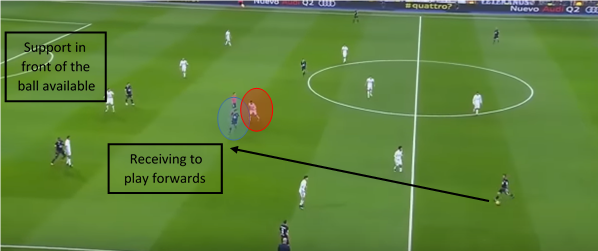
When opposition midfielder decides to mark tight, it provides a great opportunity for combination play using one-two’s and wall passes. This will be possible as defensive midfielder will naturally leave spaces around him if he decides to go man to man. Going towards the ball will also create spaces in behind to go directly into striker’s feet.
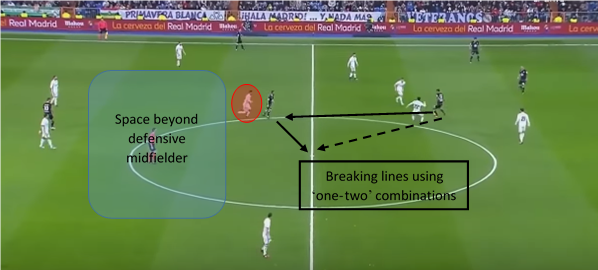
As the point of attack is switched, there will be often gaps for other midfielders to run into off the ball. In this case, offensive midfielder would stay with opposition defensive midfielder, occupying his spaces and dragging him away. This can be then exploited by runs of one of the central midfielders. Striker would be looking to stay on and in behind the back line and stretch the pitch if possible.
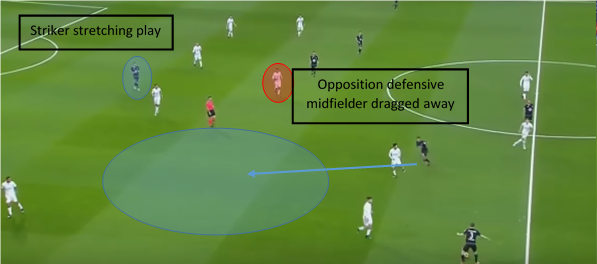
Another option involves one of the strikers dropping deeper into half spaces around the opposition defensive midfielder. This should be done on the angle, in a different channel to where the ball is. This will ensure defensive midfielder will have longer distances to cover as the ball is played across.
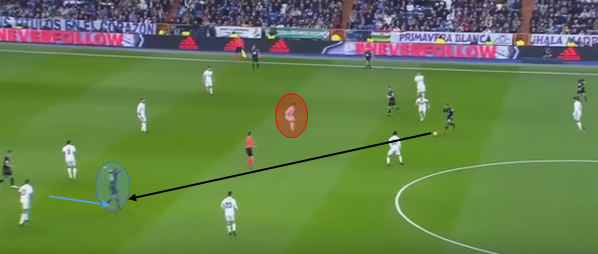
When the ball is on the wings, another opportunity to exploit spaces in front of the back line might arise. This might be possible as defensive midfielder will often go into wide spaces where the ball is and leave central areas unprotected. Spaces in front of the penalty box might be a great opportunity for a cut back type of cross and finish.
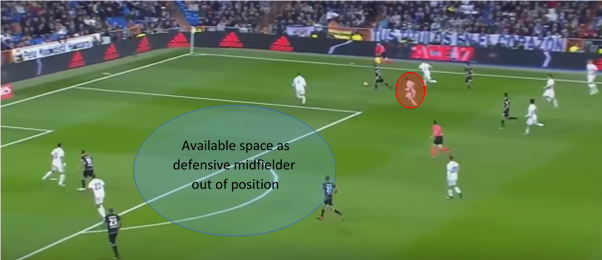
Key requirement for exploiting spaces between the opposition units and spaces around the defensive midfielder is rotation between the players and positional flexibility. Strikers should be looking to exchange positions with midfielders and overload half spaces in front of the opposition back line. This will cause a problem for defensive midfielder and centre backs who will have to decide whether to stay in line of follow a marker.
By Alex Trukan, Development Coach, Nottingham Forest
@AlexTrukan


